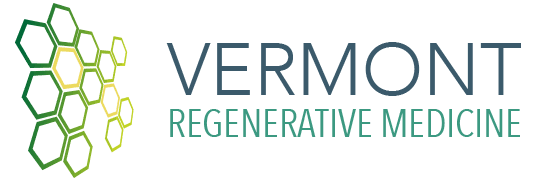Regenerative Injection Treatment
by Dr. Fenton
Regenerative Injection Treatments (RIT, Prolotherapy) are used for joint, tendon, ligament, muscle and spinal pain. Treating musculoskeletal pain with RIT / prolotherapy stimulates the body to heal itself. The American Academy of Pain Management, American Society of Interventional Pain Physicians and the American Association of Orthopedic Medicine endorse RIT for chronic unresolved musculoskeletal pain. More recently RIT done with cell-based therapies using autologous platelet rich plasma/fat/bone marrow concentrate are at the forefront of sports and regenerative medicine worldwide.
PRP acts as a scaffolding that the body’s own cells can adhere to for regeneration and releases growth factors to attract and signal cells to repair the damage. Highly concentrated and purified PRP works better than conventional commercial PRP, and our office only uses this rarefied type of PRP. Bone marrow concentrate contains adult stem cells, and when mixed with PRP is the most proven adult stem cell therapy for use in orthopedic and sports medicine. Fat not only acts as a scaffolding but releases key factors that promote growth and repair. Fat also has the highest adult stem cell concentration of any tissue. More recently RIT done with cell-based therapies using autologous platelet rich plasma/fat/bone marrow are at the forefront of sports and regenerative medicine worldwide.
The American Academy of Pain Management, American Association of Interventional Pain Physicians and the American Academy of Orthopedic Medicine endorses RIT for chronic unresolved musculoskeletal pain. Chronic musculoskeletal pain is the No. 1 cause of chronic disability in the United States and the leading reason for patient visits to physicians. Treating musculoskeletal pain can be difficult. Conventional treatment options are, at times, insufficient to restore function and reduce pain. Physical therapy, manipulation, drug treatment, corticosteroid injections and surgery can be beneficial in certain circumstances. When they are not successful, however, patients are often left without options.
RIT gives ligaments, tendons, and joints a second chance at healing and is often described as “anti-aging medicine” for the joints. When a joint is injured, ligaments and tendon insertions are strained. This causes an inflammatory response, a critical phase of healing. Inflammation at a site of injury clears dead cells, promotes capillary growth and restores damaged tissue. However, there is the misconception that with time sprains and strains will heal completely. In fact, post-injury healing of ligaments and tendons is only 50 to 70 percent of pre-injury strength. When ligaments are lax, joints become unstable, and degenerative changes can occur, which can lead to osteoarthritis. For example, if one of the ligaments in the knee were strained, the knee joint is predisposed to early onset of arthritis (post-traumatic arthritis). Because RIT gives the ligament a second chance at healing, the ligament is strengthened, the joint is stabilized and the predisposition to arthritis is reversed.
To determine if a person is a candidate for RIT, a complete history and physical exam are done, sometimes along with lab tests, ultrasound evaluation, X-rays, CT scans, and MRI’s. The joint/tendon/ligaments are evaluated and the site of damage or degeneration is determined. A detailed orthopedic physical exam is the most important part of any evaluation. If there are no contraindications, a solution local anesthetic and some combination of natural substances (eg. dextrose, vitamin B12, glucosamine HCL, cell based treatment with the patient’s own platelet-rich-plasma, autologous fat or bone marrow grafts, etc.) are introduced into the damaged ligaments, tendons and/or joints. This launches the healing cascade, leading to deposition of new, better-organized collagen/cartilage and restoration of ligament/tendon/joint health and function.
An average patient requires 4-6 treatments spaced a 3-6 weeks apart. When cell-based therapies are used fewer treatment spaced further apart are the norm. Diabetics, smokers, those over 85, and patients with fibromyalgia or disease associated with poor tissue healing may have less than optimal responses. They may benefit from a course of nutritional supplementation prior to treatment with RIT. It is rare that RIT is contra-indicated due to a patient’s medical condition
Clinical success rates for RIT can be as high as 91 percent, depending on the location (but not duration!) of the problem. This makes RIT is a treatment with great potential benefit for many.

